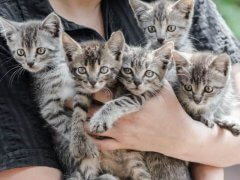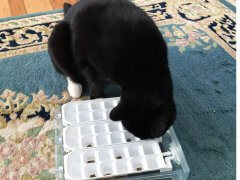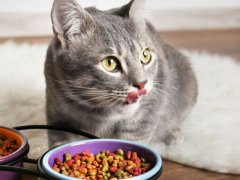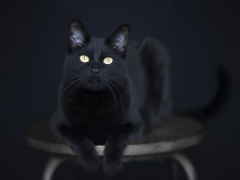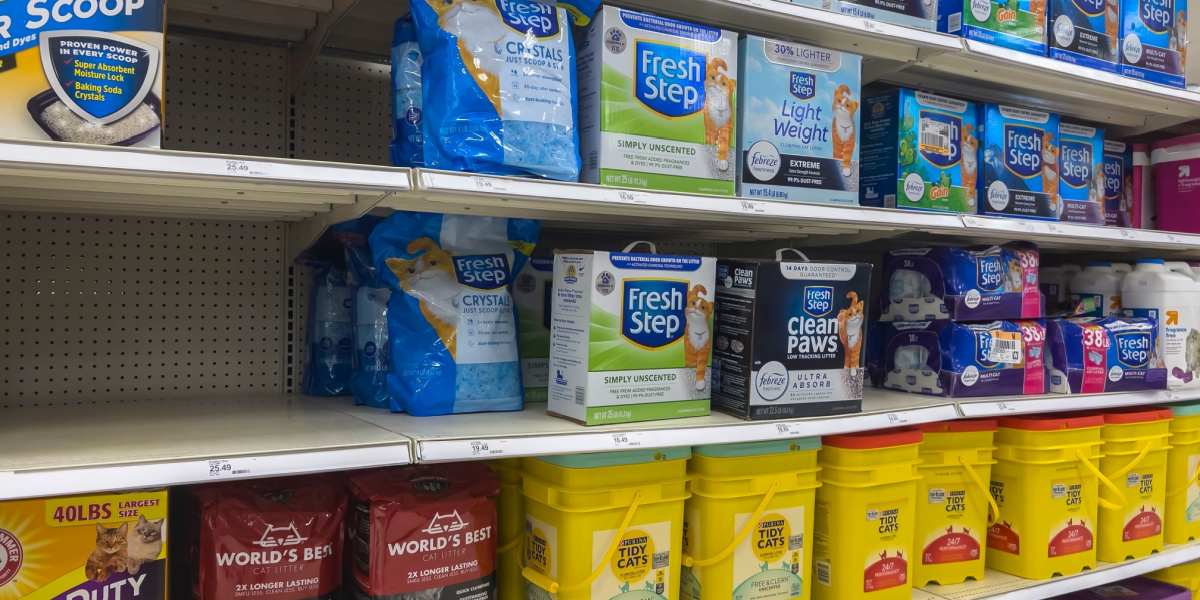
If you are looking for affordable and eco-friendly alternatives to clay cat litter, you are not alone. Choosing the right cat litter for you, your pet, your wallet, and the environment is an important aspect of being a responsible cat owner. Alternatives to typical clay cat litter are made from all kinds of materials, such as corn, paper, walnuts, wheat, sand, pine, or grass.
These alternative cat litters are not only often more affordable than traditional clay litter, but they are more eco-friendly as well.
Environmental Impact
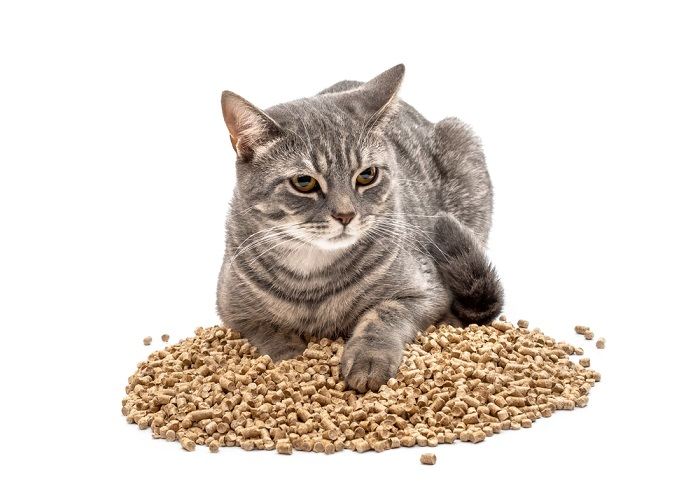
There are many materials that are both affordable and eco-friendly in some cat litters in today’s market.
Traditional cat litter is made from a type of clay called bentonite. It has been used in cat litter for years. This type of litter is known for its ability to absorb moisture and to swell to many times its original size.
While bentonite is considered a natural product, the mining of this clay is controversial. Bentonite is extracted using a method called strip mining. This involves a process that moves large amounts of soil and rock in order to get to the minerals underneath. This creates large holes in the ground and disrupts the natural area it is mined from.
In addition, clay-based litter is known to contain harmful carcinogens that become airborne through dust particles and can be ingested. This will often cause allergic reactions or even trigger asthma in your kitty.
Also Read: Unbiased Cat Litter Reviews
Litter Alternatives
If you’re looking for eco-friendly alternatives to clay cat litter that also save you some money, then you have come to the right place! Below we have provided some uncommon alternatives to traditional cat litter that you may never have considered.
1. Pine

Pine pellets in cat litter are a great option and hide bad odors very well.
Pine litter is heated to a very high temperature to create pellets from the wood and sap. Horse bedding pellets are also used and are made from sawdust. Pine pellets used for litter may seem quite unusual but they do have some advantages that make them an ideal litter alternative.
While most pine litter is non-clumping, the pine fibers lock away odors and absorb moisture. The only issue with pine litter is that some cats simply do not like the texture of the pellets and some do not like the smell of pine.
Also Read: Feline Pine Cat Litter Review
2. Wheat

Consider making your own cat litter from ground-up wheat berries and baking soda.
Wheat is also a great eco-friendly cat litter option. You can even make your own by grinding up whole wheat berries into a coarse powder. This particular litter alternative is the one that resembles the texture of traditional litter the most.
Wheat litter clumps well and makes loose clumps similar to clay litter. The clumps are known to stick to the sides and the bottom of the litter box, making it difficult to clean. Tracking and dust from the granules are also similar to that of clay litter.
Also Read: The 11 Best Non-Clumping Cat Litters
3. Soil
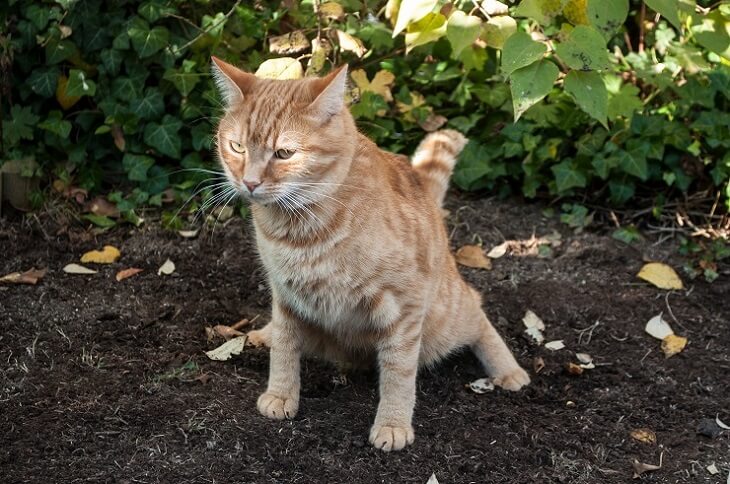
Cats naturally prefer soil for their toilet options, but it can be messy.
Soil is a cat’s number one preference when nature calls. If your cat is not able to use an area of your yard, then a bag of potting soil can do the trick. If you want to try out soil, consider using baking soda for odor control.
Be prepared to find the soil scattered all over your litter box area. Having a mat in place for tracking is a must if you select this method of litter.
Also Read: The 5 Best Disposable Litter Boxes In 2023 – We Tried Them All
4. Ground-up Corn

Ground-up corn not only uses a natural ingredient but also makes use of corn cobs.
Corn cat litter is usually made from finely ground whole corn kernels or ground-up cob. This method also utilizes a waste product, making it a more eco-friendly cat litter. Corn litter is flushable, biodegradable, and neutralizes unpleasant odors. If you choose this litter, always check the brand’s instructions before flushing the litter down the toilet.
Corn cat litter also reduces waste by transforming urine into small firm clumps. This kind of litter is considered one of the safest options for kittens because of its size and food base.
Also Read: World’s Best Cat Litter Review
5. News Paper
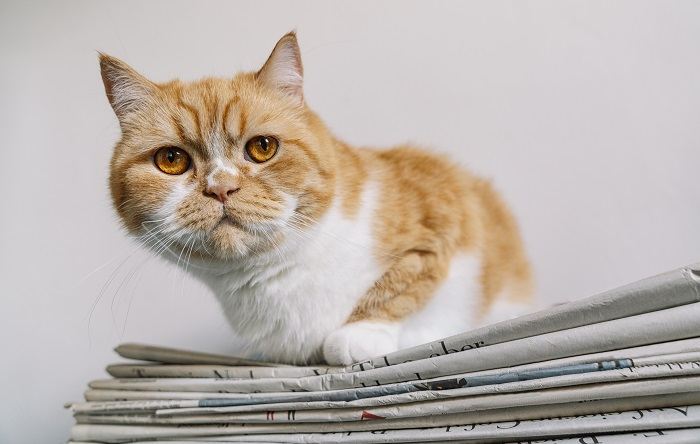
Paper can make for an excellent eco-friendly cat litter.
Newspaper and other papers are recycled into long strips that can be reused as paper, but the short strips would go to waste. However, some paper cat litter companies make good use of those normally wasted parts and turn them into pellets or balls of litter.
Paper pellets make for great eco-friendly cat litter, and are soft on your cat’s paws. They are also dust-free and some even have clumping ability.
Also Read: The 5 Best Cat Litter Scoops: Purchased and Tested
6. Grass Seed

A very natural alternative to traditional cat litter is litter made from grass seed. It is known for being lightweight with scented and unscented options available through manufacturers.
Grass seed’s natural fibers have high starch content, which absorbs liquids fast, forming tight, solid clumps that are easy to remove. Some have added sorghum to help minimize any odors that might escape. This litter is very lightweight with small granules that will track easily around the outside of the litter box.
Also Read: 6 Common Reasons Why Cats Pee Outside The Litter Box
7. Walnut Shells

Since walnut shells are generally thrown out, they make for a great eco-friendly litter alternative.
Walnut cat litter uses only the shells of walnuts, which is a product that usually goes to waste. Walnut cat litter does control odor well, especially the coarse formulas. The finer granules are fast-clumping making this ideal and ideal eco-friendly cat litter to use in multiple cat homes.
Walnut cat litter usually produces little to no dust and has a very small amount of tracking. Some manufacturers of this kind of litter offer several granule sizes as well as pellets formulas to cater to your cat’s preference.
Also Read: Naturally Fresh Cat Litter Review
8. Wood/Sawdust

If you want a litter that will clump, mask smells, and make tracking less of an issue, sawdust may be the litter for you.
Wood shavings or sawdust are other popular eco-friendly cat litter alternatives that are inexpensive. Wood litters usually consist of cedar, spruce, or fir. Both wood shavings and sawdust do a great job of absorbing urine. They are also good at masking unpleasant odors.
Wood shavings work great for not getting stuck in your cat’s paws which means no tracking. This kind of litter is pretty good at clumping when it gets wet.
9. Coconut Shells

Like walnut shells, coconut shells are often used in cat litter alternatives.
Coconut cat litter is made entirely from coconut shells and is scent-free. This means it contains no harmful chemicals or allergens, making it hypoallergenic. Unlike traditional litter, coconut litter can be disposed of in and around the yard, or even in a compost bin. This type of cat litter produces no waste and will not end up in landfills like clay litter.
Coconut litter is very fine, which results in tracking around the litter box areas. It is not the best at clumping which means in time, it will not control odor well on its own.
Also Read: CatSpot Litter Review
10. Sand
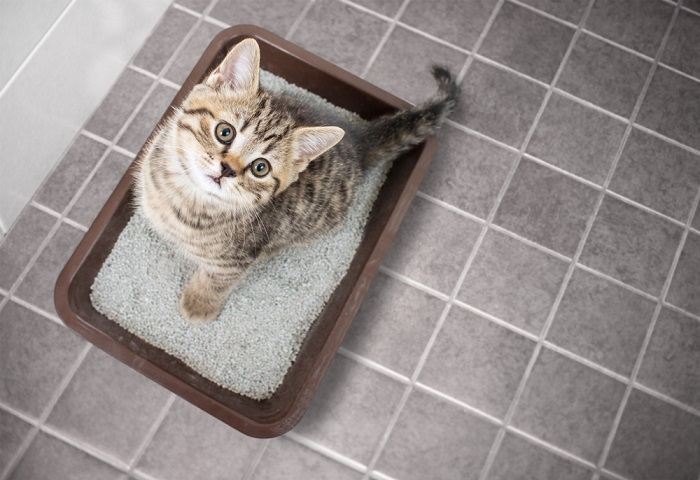
Like soil, cats enjoy using sand for their toilet.
Cats instinctively love sand, making this type of eco-friendly cat litter ideal. Sand also clumps well when moisture is present. It is biodegradable and does not carry any scent.
The one downside to sand is that it does not absorb odor well. Sand is also a little messy and tends to track and create dust around the litter box.
Clumping And Odor Control

Clumping cat litter makes clean-up far easier than non-clumping materials.
When moisture is absorbed and wet litter holds together firmly, then it creates clumps. A litter that has clumping abilities does not need to be changed as often and you can easily scoop the clumps out, leaving behind the clean parts.
Odor control is also a desired ability when considering a good eco-friendly cat litter alternative. Some litters have added scent or are naturally fragrant which helps mask odor.
If you’re looking for extra odor protection for your chosen litter alternative, you can simply mix one part baking soda with two parts litter.
Also Read: The 12 Best Clumping Cat Litters
Final Thoughts
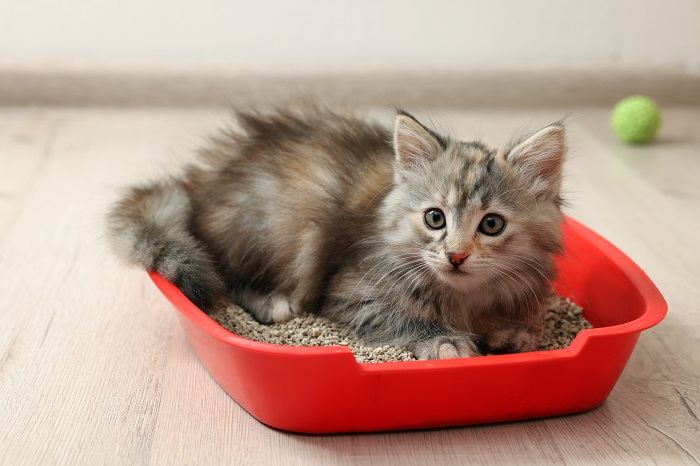
The most important thing for choosing a cat litter is choosing one that your cat likes and will use.
With so many alternative litters to choose from, your cat’s preference will be the most important. While these alternative litters may be cost-effective solutions, a litter is not worth anything if your cat will not use it!
Also Read: Best Cat Litter For Odor Control: The Complete Guide To Ending Litter Box Odor For Good
 Fact checked by
Fact checked by
